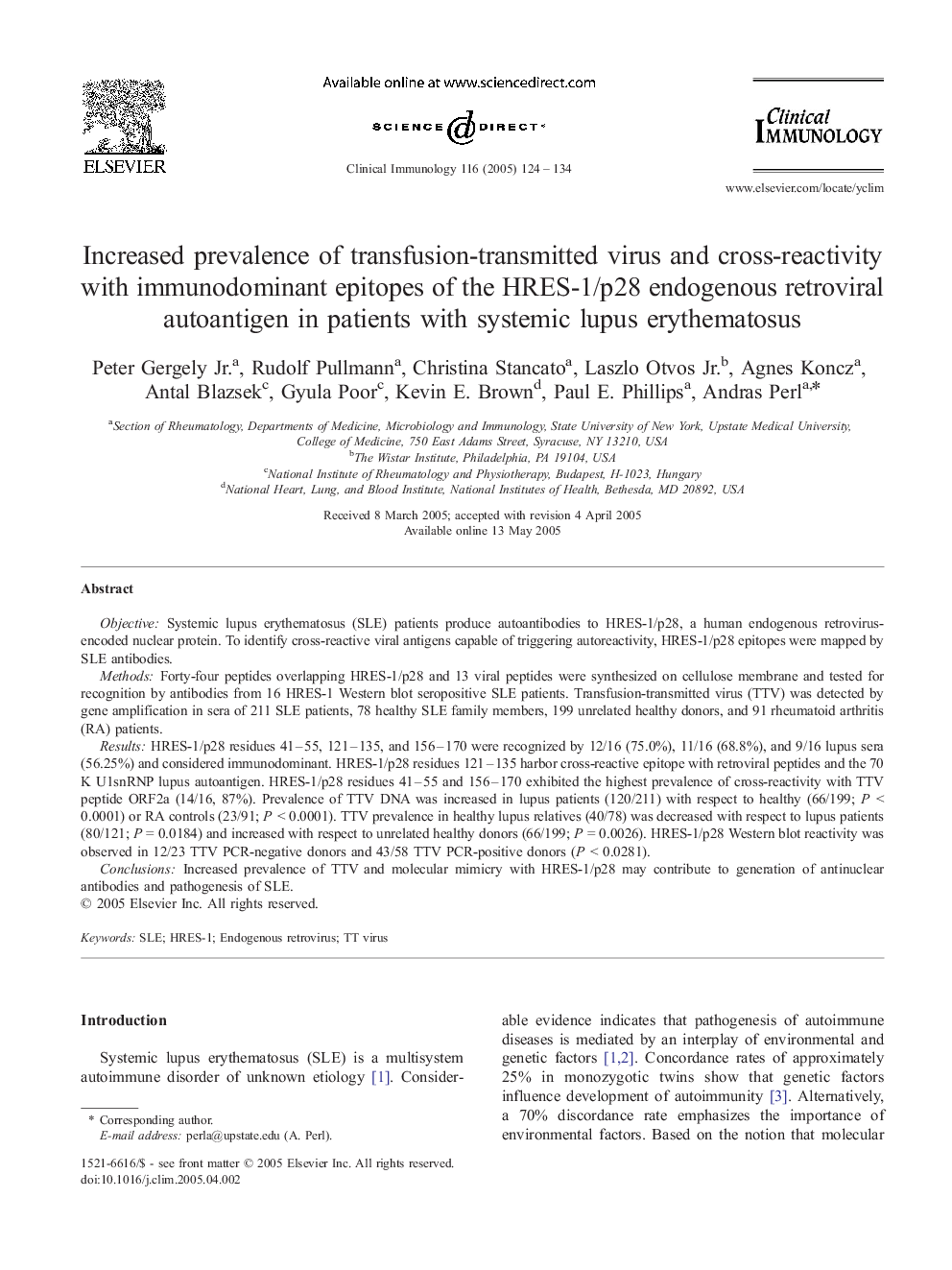| Article ID | Journal | Published Year | Pages | File Type |
|---|---|---|---|---|
| 9236525 | Clinical Immunology | 2005 | 11 Pages |
Abstract
Objective: Systemic lupus erythematosus (SLE) patients produce autoantibodies to HRES-1/p28, a human endogenous retrovirus-encoded nuclear protein. To identify cross-reactive viral antigens capable of triggering autoreactivity, HRES-1/p28 epitopes were mapped by SLE antibodies. Methods: Forty-four peptides overlapping HRES-1/p28 and 13 viral peptides were synthesized on cellulose membrane and tested for recognition by antibodies from 16 HRES-1 Western blot seropositive SLE patients. Transfusion-transmitted virus (TTV) was detected by gene amplification in sera of 211 SLE patients, 78 healthy SLE family members, 199 unrelated healthy donors, and 91 rheumatoid arthritis (RA) patients. Results: HRES-1/p28 residues 41-55, 121-135, and 156-170 were recognized by 12/16 (75.0%), 11/16 (68.8%), and 9/16 lupus sera (56.25%) and considered immunodominant. HRES-1/p28 residues 121-135 harbor cross-reactive epitope with retroviral peptides and the 70 K U1snRNP lupus autoantigen. HRES-1/p28 residues 41-55 and 156-170 exhibited the highest prevalence of cross-reactivity with TTV peptide ORF2a (14/16, 87%). Prevalence of TTV DNA was increased in lupus patients (120/211) with respect to healthy (66/199; PÂ <Â 0.0001) or RA controls (23/91; PÂ <Â 0.0001). TTV prevalence in healthy lupus relatives (40/78) was decreased with respect to lupus patients (80/121; PÂ =Â 0.0184) and increased with respect to unrelated healthy donors (66/199; PÂ =Â 0.0026). HRES-1/p28 Western blot reactivity was observed in 12/23 TTV PCR-negative donors and 43/58 TTV PCR-positive donors (PÂ <Â 0.0281). Conclusions: Increased prevalence of TTV and molecular mimicry with HRES-1/p28 may contribute to generation of antinuclear antibodies and pathogenesis of SLE.
Keywords
Related Topics
Life Sciences
Immunology and Microbiology
Immunology
Authors
Peter Jr., Rudolf Pullmann, Christina Stancato, Laszlo Jr., Agnes Koncz, Antal Blazsek, Gyula Poor, Kevin E. Brown, Paul E. Phillips, Andras Perl,
